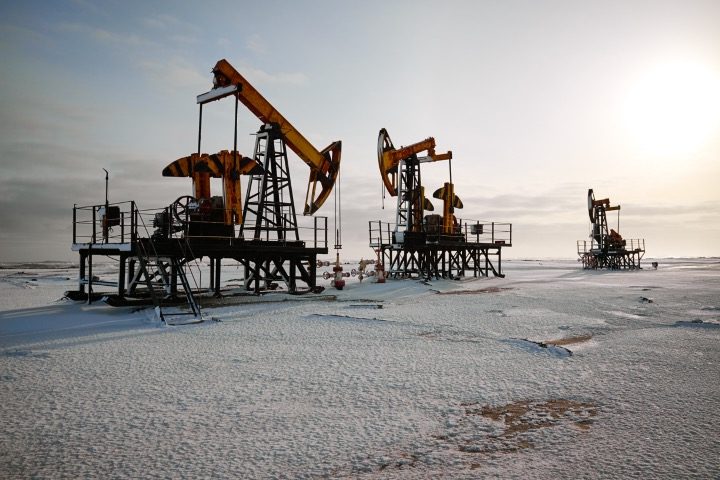
On December 25, news outlet Bloomberg reported that oil processing had increased in Russia, soaring in the previous week to achieve close to the highest daily refining runs in more than eight months.
Citing sources, Bloomberg indicated that Russia’s refineries processed around 5.65 million barrels of crude daily from December 14 to 20. The figure was down by around 50,000 barrels per day (bpd) from the previous seven days, when average daily refinery runs attained the highest since early April.
Bloomberg calculations revealed that Russian daily crude refining in the first 20 days of December averaged around 5.57 million bpd, up almost 60,000 bpd for most of November.
Meanwhile, tanker-tracking data reportedly depicted Russia’s daily overseas crude supplies in the global market falling to 3.18 million bpd in the week to December 17 owing to a temporary halt in shipments from the Baltic Port of Primorsk. “Still, the less volatile four-week average increased by 80,000 barrels a day,” Bloomberg added.
Russia has been diversifying its energy supplies following Western sanctions and since the EU ceased accepting the country’s oil transported by sea as a result of the Russo-Ukrainian conflict. In February, Moscow vowed to voluntarily decrease oil production by 500,000 bpd starting in March as a response to sanctions, and also stopped selling to buyers who abided by a Western-imposed price cap of $60 per barrel.
Together with its OPEC+ allies, Moscow also agreed to reduce combined crude and petroleum exports by 300,000 barrels daily through the rest of the year, and to boost the curbs by another 200,000 barrels per day in the first quarter of 2024.
During an interview with RIA Novosti on December 25, Russian Deputy Prime Minister and Minister of Trade Denis Manturov said that his country was surpassing Western nations in weapons manufacturing despite the latter’s drive to offer military support to Ukraine.
Manturov provided insights regarding the state of Russia’s defense industry, which has ramped up its arms production to support the military as the Ukraine conflict drags on.
Based on the minister’s statements, Russia’s military factories have bolstered output and delivery rates by 10-12 times for particular categories of materiel and hardware. “Trust me, the numbers are huge,” he declared, without elaborating further, quoting “certain nuances.”
“I don’t want to boast but I can say that we have started picking up pace in production and we accomplished that earlier than Western countries. How long this race will last — this is another question,” Manturov posited, adding that Moscow had clear plans for future development.
Regarding Western countries’ arms production plans, the minister refused to speculate if they “will have enough juice” to keep up. “For the time being, we are outpacing them,” he elaborated.
Manturov also disclosed that Russia’s defense industry facilities have been operating seamlessly, fulfilling at least 98 percent of all state orders. “This is a record, the highest level of fulfillment of state defense orders in the entire modern history of Russia,” he proclaimed, adding that total output has more than doubled compared to 2022.
Earlier this month, Russian Prime Minister Mikhail Mishustin said that Russia has managed to triple the manufacturing of armored units and double the production of aircraft, including drones, compared to 2022. Last month, Russian Defense Minister Sergey Shoigu also divulged that Moscow’s forces are obtaining five times more artillery shells and missiles in 2023 than last year.
In late March, Russian President Vladimir Putin estimated that the country’s defense industry was producing three times more ammunition than Western backers could deploy to Ukraine. He said that although the United States was producing 14,000-15,000 artillery shells a month, with plans to raise this number to 42,000 by 2024, such a number was not sufficient to meet Ukraine’s needs as the latter is using up to 5,000 shells each day.
On December 24, Russian State Duma Speaker Vyacheslav Volodin wrote on his Telegram channel that the U.S. has lost its economic dominance, and efforts to regain it by launching “military conflicts, sanctions and trade wars, organizing terrorist attacks and destroying the European economy” have not brought Washington its desired outcomes.
Russia’s top lawmaker stated that the greenback was the only remaining instrument of U.S. influence, yet other countries are increasingly ditching the dollar as Washington is using it as a weapon in a “political battle.”
He added that U.S. President Joe Biden was depriving his own country of its “last advantage,” as such threats do not build trust in either the country itself or its currency.
The global trend towards using national currencies in trade instead of the dollar began to gain momentum in 2022, after Ukraine-related sanctions excluded Russia from the Western financial system and froze its foreign reserves.
“In an effort to ensure their financial security other states will now more actively abandon the dollar as the world reserve currency,” Volodin penned.
And in the wake of widespread sanctions on Russia, which have proved ineffective, the U.S. is “hysterically threatening to disconnect banks around the world from their financial system for violating them,” he added.
Last year, Moscow considerably increased the use of national currencies in its foreign trade, pivoting away from the euro and dollar in international transactions. The share of both the euro and the greenback in Russia’s export settlements dropped from 96 percent in early 2022 to 17 percent this past September, according to the central bank.
Furthermore, a recent study by the Institute of Economics of the Russian Academy of Sciences found that Western sanctions have failed to undermine the Russian economy owing to a “big country trap” effect.
Alluding to the Western embargo on Russian seaborne oil supplies, researchers of the aforementioned study pointed out that, given that Russia is a country serving as a major player in the global market, Western sanctions on Russian exports would inevitably backfire, causing a rise in global prices. The sanctions on Russian oil unveiled by the G7 and EU late last year were conceptualized as a way to curb Moscow’s energy revenues without leading to a rise in global energy prices. In reality, nevertheless, these measures have had a boomerang effect. Skyrocketing crude prices have compensated Russia financially for a decline in supplies, putting the “formal effectiveness” of the sanctions at odds with their “strategic effectiveness,” the study reported.


